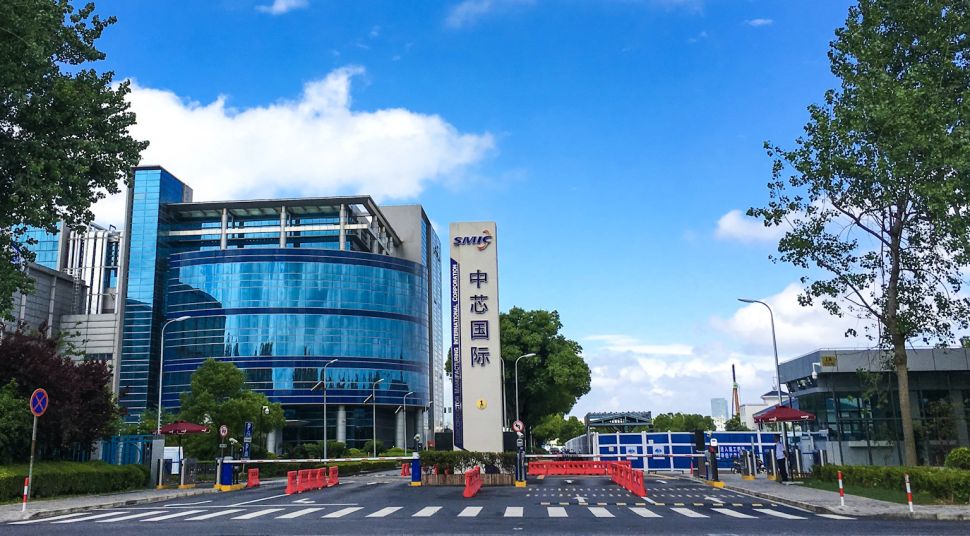$1.4 trillion program unlikely to deliver results by 2025

Two years ago, we wrote that the Chinese government allocated a huge amount of $1.4 trillion by the standards of any country and industry. The money was allocated to the needs of the electronic components manufacturing industry. Funds are not provided at once – they are allocated gradually to Chinese specialized companies.
The results of the program’s work became noticeable quite quickly – after a few months. But now the voices of experts (including from China) are getting louder and louder that the “Made in China 2025” program will not give the desired results. Details are under the cut.
The problem isn’t about the money.
Despite the fact that China’s electronics industry is actively developing, there are many problems. For example, over the past couple of years More than 10,000 Chinese chip developers have closed. Most of it was opened just with the support of the state.
At first, everything seemed to be great. The Chinese media reported an increase in chip development companies by several tens of thousands. This is a very strong growth. For example, in 2015 there were 736 such companies, in 2017 – 1780. But from 2020 to 2021, about 70 thousand new companies that were engaged in the development of chips were registered in the country.
As it turned out, state support is not everything, the companies that supported the funding had to compete both with each other and with international business. Not everyone passed this stage of testing. Moreover, there were much more negative factors than the usual, albeit tough, competition.

The problem is that they all depended on government subsidies. In addition, in a short time, a large number of not very different companies arose that were engaged in the development of “mass consumption” chips, so to speak. They opened, received subsidies, and closed after a short time. Digitimes journalists even called such organizations fake, fake tech companies. The cost of one such company is many millions, and even tens/hundreds of millions of US dollars, that is, a huge amount of money was spent on supporting fakes.
Another problem is that even the “white and fluffy” chip developers who opened up with real work as their goal could not get experienced specialists on the staff, including both technologists and managers. But the semiconductor business is extremely complicated, here you need to be able to build supply chains, negotiate with suppliers of raw materials, and, if necessary, conclude an agreement with contract chip manufacturers. And without normal management by an experienced manager, such a business is doomed, if not to failure, then to a “smoldering” existence, when any negative factor can lead to disruption of production, cancellation of contracts and bankruptcy.
Rapid growth was provided not only by Chinese companies
Another issue was addressed by Wei Shaojun, deputy director of the China Semiconductor Industry Association. Previously, he used to talk about China’s success in the electronics industry. But now he has come forward with concerns about the successful completion of the program.
So, He saidthat, indeed, in China, the volume of chips produced in the country itself, and not imported from somewhere, is actively growing. In 2013, only 13% of the chips used in the country were produced in China. Everything else was imported from abroad. In 2022, the volume of “home” chips grew to 41.4%.
But such rapid growth is mainly due to foreign enterprises and investments. So, starting from 2016, the average annual growth rate of Chinese companies owned by the Chinese amounted to 14.7%. But the same indicator for companies, the main holders of shares in which are foreigners, or companies that are wholly owned by foreign business, amounted to 30%. Among the latter are companies created by businesses from Taiwan, South Korea and other countries.

As far as one can understand, when compiling the Made in China 2025 program, experts paid attention only to global growth figures, without separating foreign and domestic capital. Unfortunately, as a result of the trade war between China and the United States, the share of foreign business is declining, as is the volume of foreign investment. If China used to develop overactively due to globalization, now, due to the transition of many companies to the production of chips in their own country (USA, EU, etc.), the Celestial Empire has serious problems. Accordingly, due to deglobalization, reach a figure of 70% relative to “home” chips, i.e. net import substitution, by 2025 is unlikely to succeed.
Now in China there is also a very large difference between the demand for semiconductors and the supply of Chinese companies. Demand is about 1.5 million 300mm wafers per month. The offer is only 440,000 plates. Everything else is either imported or produced in China by foreign business. Hei Shaojun also noted that many Chinese companies are operating inefficiently, as discussed in the previous section.
And that is not all

In addition to internal negative factors, Chinese companies engaged in the semiconductor industry are also affected by powerful external factors. They also can not be called positive. Initially, the PRC business felt very good in the face of a shortage of semiconductors. This refers to companies that supply the chips themselves to the market, from “consumer goods” to exclusives in the form of powerful modern processors and graphics adapters. Prices were rising all the time, demand was also increasing and, in general, everything was fine.
But in 2022, the “ebb” began – demand gradually began to fall, followed by prices, despite the fact that stocks of devices and components in warehouses continued to increase. Therefore, companies that depended solely on state subsidies and rising prices immediately felt the impact of the crisis.
Another factor is the increasingly stringent US sanctions that have closed many Chinese chipmakers from the global market. Well, European and American suppliers of tools for the production of chips, i.e. lithographic machines were also banned from cooperating with China.
Everything is bad?

In general, worse than expected by the Chinese authorities and business, but in any case, China’s electronic industry is developing very actively. Perhaps we are talking about simply postponing the result in 70% of the chips produced by Chinese companies to a later date.
Now, in order to get more opportunities in their own country, Chinese chip manufacturers are gradually increasing their purchases of wafer manufacturing equipment. This is done in order to ensure the normal operation of their own enterprises. It is clear that the Celestial Empire conducts such transactions covertly, so that partners and Chinese companies themselves do not once again attract the attention of US regulators.
If China receives additional sanctions, they could significantly slow down the implementation of the Chinese import substitution program. If the country somehow comes to an agreement with the United States, the settlement of economic problems begins, then the plan may turn out to be quite realistic. As it will be in reality – time will tell.
You may also be interested in these texts:
→ Create a Django blog with polls and tests. Brief instruction. Part 1
→ OpenStack vs VMware: which is better – open source or proprietary platform
→ When typing hurts you: how we got a static analyzer




